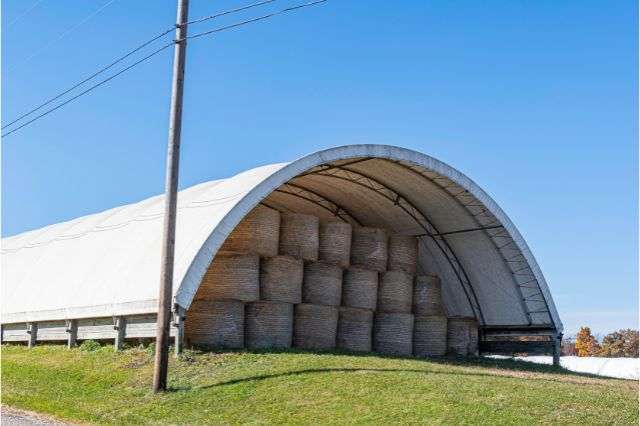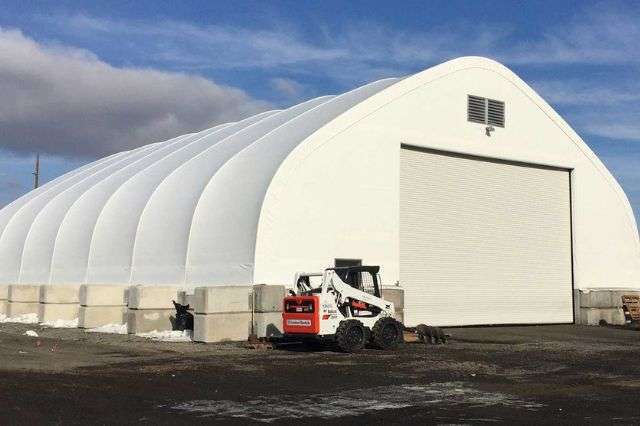Building A Green Future: Eco-Friendly Aspects Of Fabric Shelters
Fabric shelters are increasingly becoming a go-to solution for various applications, from temporary storage to event spaces. Not only are these structures cost-effective and easy to install, but they also offer significant eco-friendly advantages.
The objective of this article is to provide an in-depth look at the environmental benefits of fabric shelters. It aims to educate readers on why they stand as a sustainable alternative to traditional building methods.
Why Fabric Shelters?
Fabric shelters have seen a surge in popularity in recent years, and for good reasons. One of the key advantages is their affordability. Unlike traditional structures made of steel or wood, fabric shelters are often less expensive to produce and install. This makes them an accessible option for various uses, from industrial applications to public events.
Another benefit lies in their quick and straightforward setup. Insulated fabric shelters, in particular, can be erected in a fraction of the time required for conventional buildings. This speedy installation not only saves time but also reduces labor costs, making these shelters an increasingly appealing choice for budget-conscious consumers and organizations.
Most importantly, fabric shelters boast a significantly lower environmental impact when compared to their traditional counterparts. The materials used are often lightweight and recyclable, leading to reduced transportation emissions. Additionally, their energy-efficient design minimizes waste, contributing to their overall sustainability.
Material Matters
When discussing the eco-friendly attributes of fabric shelters, the types of materials used cannot be overlooked. Typically, these shelters are crafted from high-quality, durable fabrics such as polyethylene, vinyl, or even specialty textiles designed for specific applications. Some companies are pushing the envelope further by incorporating recycled materials and organic fibers into their designs.
Eco-friendly materials serve a dual purpose. First, they are often sourced through sustainable methods, ensuring that the production process itself is responsible. Second, these materials are designed to be recyclable or biodegradable, allowing for a closed-loop lifecycle that minimizes waste. As a result, the overall carbon footprint of the shelter is considerably reduced, making a notable contribution to environmental preservation.
Let’s delve into some examples. Recycled materials, such as repurposed plastics or textiles, can be utilized in the fabric production process. These not only reduce the reliance on new raw materials but also give a second life to items that might otherwise end up in landfills. Similarly, the use of organic fibers like hemp or bamboo not only supports sustainable agriculture but also results in a biodegradable end product.
Energy Efficiency
Energy efficiency is another cornerstone of the eco-friendly appeal of fabric shelters. One of the standout features is the utilization of natural lighting. Many fabric shelters are designed with translucent materials that allow sunlight to penetrate, reducing the need for artificial lighting. This simple yet effective design choice not only enhances visibility but also decreases electricity consumption during daylight hours.
Insulation is another critical aspect when evaluating the energy efficiency of these structures. Fabric shelters are often well-insulated, thanks to materials engineered to retain heat during cold weather and reflect sunlight during warmer months. This level of insulation minimizes the need for additional heating or cooling systems, thereby reducing energy usage and lowering carbon emissions.
The benefits of natural lighting and superior insulation extend to the realm of cost savings. Reduced dependence on artificial lighting and temperature control systems naturally results in a lower energy bill. Over time, these savings can be substantial, offering an economic incentive that complements the environmental advantages.
Durability And Lifespan
Longevity is a key factor in assessing the eco-friendliness of any structure, and fabric shelters are no exception. The use of durable materials like high-quality, UV-resistant fabrics ensures that these shelters can withstand the test of time. The longer a shelter lasts, the less frequent the need for replacement. This results in a reduction of waste, as fewer materials are required over the lifespan of the shelter.
Resistance to external elements is another crucial attribute. Many fabric shelters are engineered to withstand a variety of weather conditions, from heavy rain to strong winds. They are also designed to resist decay and corrosion, further extending their lifespan. The cumulative effect of these features is a reduced frequency of maintenance and replacements, thereby contributing to sustainability.
A longer lifespan directly correlates with reduced environmental impact. Fewer cycles of assembly and disassembly mean less energy spent on production, transportation, and setup. This has a ripple effect on various aspects of environmental sustainability, from reduced emissions to lower levels of waste material entering the ecosystem.
Easy Transportation And Assembly
Transporting materials is a significant source of carbon emissions in the construction sector. Fabric shelters, however, offer a compelling advantage here: their lightweight materials. Being light, these shelters require less fuel to transport, effectively lowering greenhouse gas emissions. This makes the overall lifecycle of fabric shelters more eco-friendly right from the outset.
But the advantages don’t stop at transportation. The assembly process itself is remarkably quick and efficient. Skilled workers can erect a fabric shelter in a fraction of the time it takes to build a traditional structure. It also reduces labor costs and minimizes the use of machinery. Less machine use means less energy consumption, and this brings us full circle back to the eco-friendly attributes of fabric shelters.
Notably, the installation process is resource-efficient as well. The simple design and pre-fabricated elements mean fewer construction materials are needed. This cuts down on waste and lessens the structure’s overall environmental footprint.
Multi-Functionality
These versatile structures serve a myriad of purposes, from providing temporary storage solutions to acting as venues for events and even agricultural applications. Their adaptability allows for a range of uses that traditional structures often can’t accommodate as easily.
Such flexibility is not merely a convenience; it also has environmental ramifications. The capability to repurpose a single fabric shelter for various needs negates the requirement to build additional, specialized structures.
For example, a fabric shelter initially used for storage can be readily repurposed as a venue for a community event. Similarly, that same structure could serve as a makeshift greenhouse or animal shelter in an agricultural setting.
Conclusion
In the journey to build a more sustainable future, fabric shelters emerge as a compelling option worth serious consideration. Given the attributes discussed in this article, fabric shelters present an appealing alternative for those looking to make responsible choices in construction and spatial solutions. They offer a blend of affordability, utility, and most importantly, environmental responsibility.
If you’re in the market for a versatile, affordable, and environmentally responsible shelter solution, it’s time to explore what fabric shelters can offer. Make a decision that not only meets your immediate needs but also contributes to a greener, more sustainable future.






